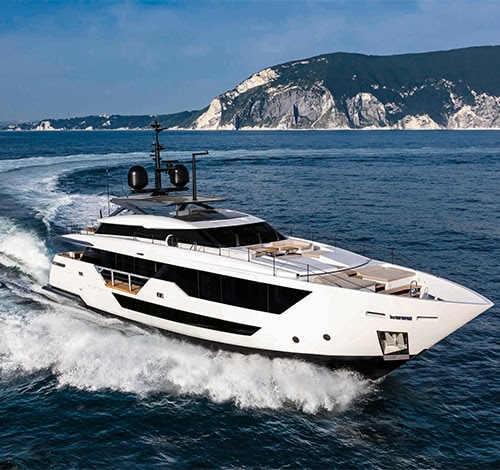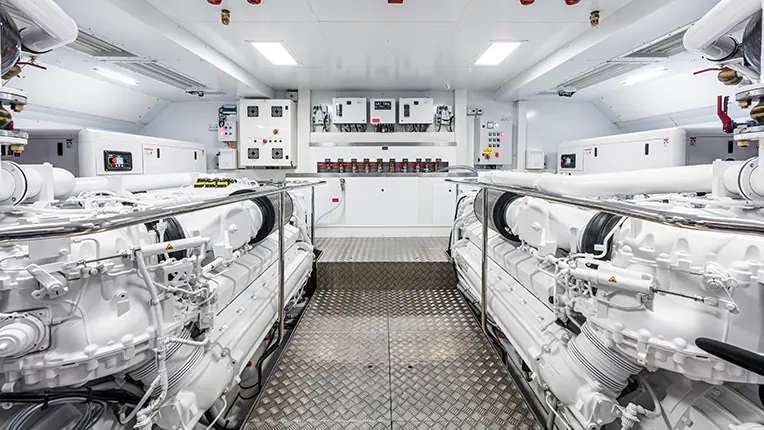A new generation of yacht propulsion

UK, October 11. In the harbour city of Ancona in the east of Italy, yacht-builder Ferretti Group is putting its Custom Line 106 yachts through their paces before handing them over to customers. Today, the first of these yachts to be powered by mtu Series 2000 units with IMO-3 approval is being tested on the water.
What’s particularly special about this yacht is the 16-cylinder engine equipped with integrated Selective Catalytic Reduction (SCR). Designed to substantially reduce nitrogen oxide emissions, it will allow yacht owners to enter emission-controlled areas (ECA zones) such as the coastal waters of Canada and the USA, as well as the Caribbean and the North and Baltic seas, without compromising the comfort and style customers expect. The yacht can reach a top speed of 26 knots (about 48 kilometres) per hour and boasts a luxury interior and exterior.
Proving the power of an eco-friendly solution
As part of the propulsion system’s rigorous testing process, engineers and measurement technicians from Ferretti Group Engineering Department and Rolls-Royce Power Systems observe how the yacht fares outside of laboratory conditions. The test crew onboard the yacht performs a series of manoeuvres while measurement technician Jan Leuthäußer from Rolls-Royce Power Systems watches the engine behaviour closely.

On the test stand, the mtu Series 2000 engines with IMO-3 approval performed just as well as previous IMO-2 units that didn’t have SCR. But at sea, technicians hope to confirm that the yacht’s turbochargers can handle the high exhaust gas backpressure caused not only by SCR but by the underwater exhausts typical of yachts. They’ll also be keeping an eye on the heat and noise levels produced by the SCR system.
“Of course, we’re nervous,” admits Rüdiger Grau, technical lead on the development and testing of the mtu propulsion system at the Rolls-Royce Power Systems headquarters in Friedrichshafen. But relieved smiles from the Rolls-Royce test crew confirm that everything has gone to plan.
“In today’s trials, the mtu 16V 2000 M97 unit showed us that it’s every bit as powerful as its predecessor. And with SCR, a lot more eco-friendly,” comments Carsten Voigt, Project Manager at Rolls-Royce Power Systems.
The Custom Line Testing & Delivery Supervisor Captain and his crew are particularly impressed by the propulsion system’s acoustic properties. With a well-insulated engine room, the engine’s noise and vibrations were hardly perceptible on deck. “It’s so important for green engines to be able to offer our customers the carefree yachting experience they’re used to,” he explained.
A hybridized future
Hybrid propulsion will also be part of the future scenario, with Rolls-Royce currently developing a fully integrated mtu hybrid solution delivering 1,432 kW per power train. The IMO-3-compliant system will comprise twin 12-cylinder mtu Series 2000 M97 diesel engines, electrical propulsion modules, gearbox, batteries, control and monitoring systems, further electronic components and an SCR system.
“Hybridizing propulsion is one possibility for making yachts greener. We’re currently working on modular solution architectures in which hybrid systems will be combined with future technologies such as methanol engines, fuel cells and batteries – all with the aim of making yachts greener and more comfortable at the same time,” notes Tobias Kohl, Director Marine Engineering Applications at Rolls-Royce Power Systems.\





